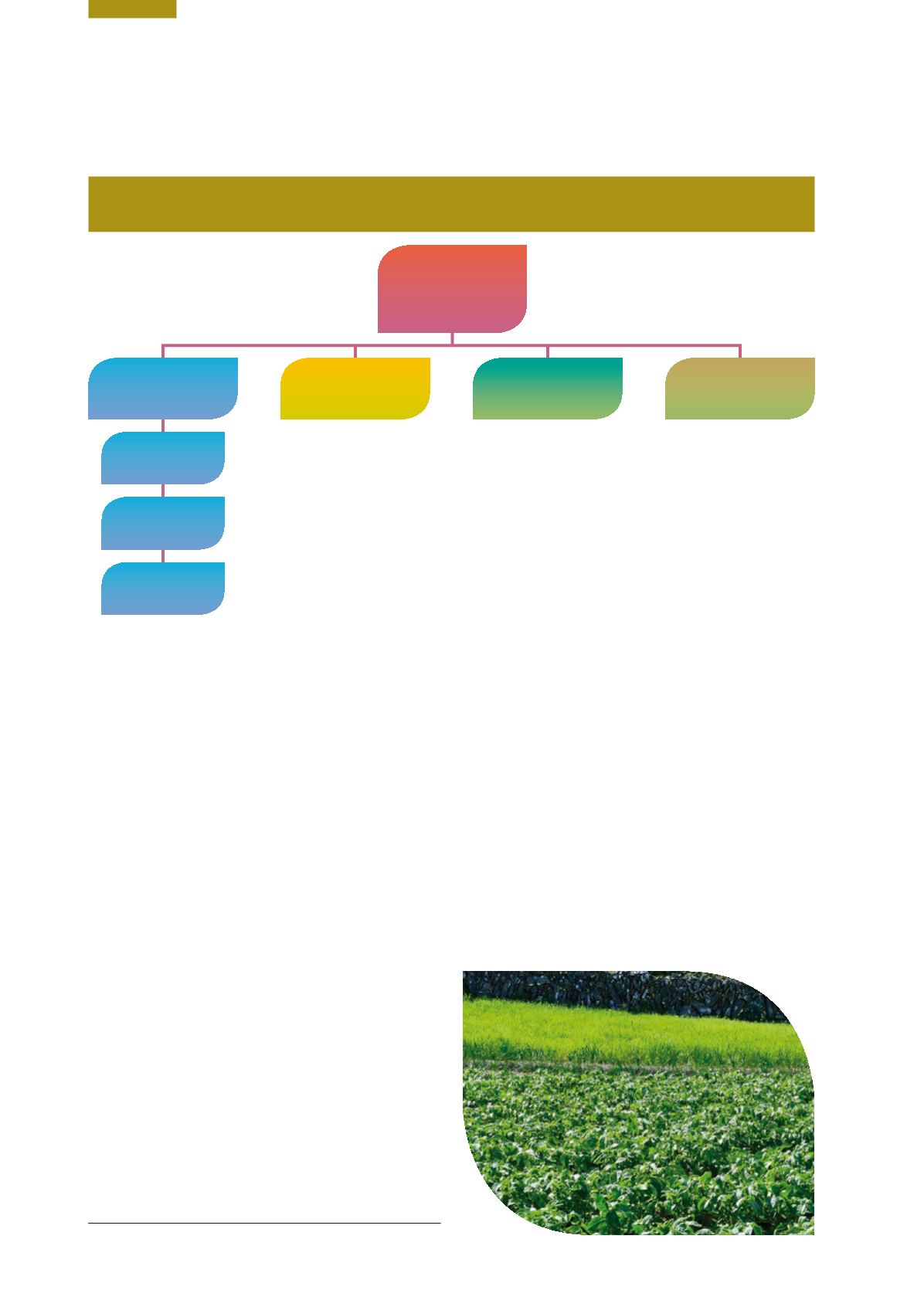

Ireland’s Environment – An Assessment 2016
190
Food Wise 2025
This strategy for development and sustainable
intensification in primary production and value
added processing is a significant challenge for the
sector as it has to be achieved without damaging the
environment upon which it depends.
The Food Wise 2025 strategy, published by the
Department of Agriculture Food and the Marine (DAFM)
in 2015
4
, set out an ambitious growth projection of a
65% increase in the value of farm gate output and a
70% increase in the gross value added to be delivered
by the sector by 2025. The strategy outlined significant
opportunities for growth in value added of the dairy
sector through innovation, value added and new premium
market development, as well as an increase in volume of
milk production following the abolition of EU milk quotas
in 2015. Growth in the sheep and pig sectors is expected
to be delivered from improved production efficiencies
rather than by major increases in animal numbers. For
tillage crops, growth is expected to be driven by improved
production efficiencies and the extent to which new
market opportunities can be realised.
Achieving growth in primary production and productivity
without damaging the environment, upon which it
depends, is a significant challenge. Moreover, there are
current environmental challenges arising from agricultural
activities that need to be addressed. Improving current
4
www.agriculture.gov.ie/foodwise2025/performance in relation to Air Quality (Chapter 2), Climate
(Chapter 3), Biodiversity (Chapter 4) and Water Quality
(Chapters 5 and 8), are key environmental challenges for
Ireland. Food Wise 2025 acknowledges the challenge and
places great emphasis on the importance of balancing
production with environmental management and
protection; clearly recognising the value that a “green”
environmentally sustainable agriculture sector can afford.
The Food Wise strategy sets out more than 70 actions
to achieve agricultural sustainability and notes that “…
achieving economic competitiveness and environmental
sustainability are equal pillars in the delivery of the vision”.
The development of a clear mechanism for tracking the
implementation of these actions and assessing their
effectiveness will be needed to ensure that impacts on the
environment, whether positive or negative, are identified
Figure 12.3
Breakdown of Farming Enterprises and Viability Category for Teagasc National Farm Survey Farms
(Source: DAFM, 2014)
circa 8,000
Micro Farms
circa 80,000
National Farm Survey 2013
28,000
Viable Farms
26,000
Sustainable Farms
26,000
Vulnerable Farms
circa 2,000
Pig/Poultry/Hort
circa 50,000
Small Farms
circa 140,000
Farms
Census 2010


















